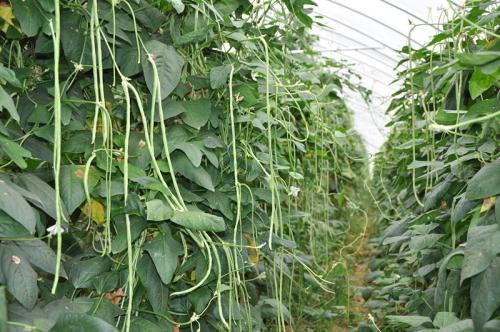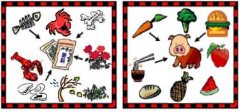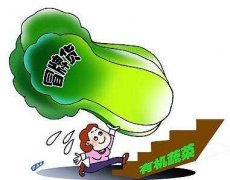Detection methods of sulfur residues: detection of organic sulfur residues in organic vegetables, harm of sulfur residues in food
Organic sulfur residue test in organic vegetables, do you know how to do the test, what is the method? If you don't understand, let's take a look at it.
The second report on the inspection of pesticide residues in organic vegetables was reported by consumers that the detected agents were all "dithiocarbamate" fungicides, commonly known as "organic sulfur." Organic sulfur is different from sulfur powder, which is the earliest pest control agent used by human beings. the germicidal effect of sulfur powder is that after contact between microorganisms and sulfur powder, sulfur enters the intracellular electron transport system and is reduced to hydrogen sulfide, which combines with a variety of proteins, causing injury and death. when the temperature is above 25 ℃, sulfur powder has fumigation effect, which is helpful to prevent and cure dew fungus disease. Organic sulfur fungicides include Fulbon, Endi, Mendi, Manganese Naipu, Zinc Naipu, Zinc Manganese Naipu, Methyl Zinc Naipu, etc. The most famous is the 80% wettable powder "Dasheng 45" produced by the former Rohm and Haas Company, which is called "Dasheng 45" by farmers. This kind of medicament belongs to ethylenebisdithiocarbamates (EBDCs) class, from which the name "dithiocarbamate" comes from. The decomposition of these compounds to form isothiocyanate (- N=C=S) interacts with the-SH on the amino acid molecules that make up the protein, which makes the protein lose its function. In addition, the heavy metal elements have a clamp interaction (Chelation) with the enzyme protein in the cell, which also promotes the bactericidal efficacy. Because of its good effect and not easy to produce drug resistance, it has a wide range of control and low toxicity to organisms, no matter single agent or mixture is widely used. This kind of fungicide is still the most widely used fungicide since it came out in the 1950s.

There are three methods for the analysis of dithiocarbamates. The earliest and most widely used is the colorimetric method published by Dr. G. E. Keppel in 1969. The agent is heated in acidic matrix to form carbon disulfide (CS2) gas, which is introduced into the solution containing amines and copper acetate to form yellow complex, and then detected by 435nm wavelength spectrometer. This method was announced as a national standard test method around 1980, and it is impossible to distinguish different kinds of "dithiocarbamate" agents, and the steps of removing adsorptive tubes or adsorbents such as interference containing sulfides must be added in the process of analysis. some vegetables such as dried mushrooms, onions and radishes are easy to cause interference. The second method is headspace injection chromatography. The principle of pretreatment is the same. The resulting carbon disulfide is directly entered into the chromatograph and detected by flame photometric detector with sulfur filter 393nm wavelength. This method was announced as the national standard test method in 2000, which is faster than the previous method and can avoid most interference. The third method is high performance liquid chromatography (HPLC), that is, metal ions are clamped with clamp agent, then dithiocarbamate ions are methylated and detected by high performance liquid chromatography (HPLC). Dithiocarbamates can be divided into four groups of analysis without interference such as sulfides, but the analysis steps are complicated and need experienced analysts. This method was announced as the national standard test method in 2003.
When colorimetry is widely used, problems caused by interference are immediately mentioned. In addition to sulfides in crops, glucosinolates commonly found in cruciferous vegetables, such as cauliflower and turnip cabbage, are easy to produce thiocyanate by enzyme reaction in plants, resulting in the same color reaction as dithiocarbamate fungicides in colorimetric analysis, resulting in false detection results.
The detection differences of the three methods can be compared with the analysis of 200 organic samples sampled and submitted for examination in May 1993. 29 of 200 samples showed positive reaction by colorimetry, 18 samples were detected by headspace injection chromatography, and 18 samples were detected by high performance liquid chromatography (HPLC). It was confirmed that there were no residues of dithiocarbamate fungicides.
In order to make the application of the three methods longer and shorter, we suggest that for the analysis of dithiocarbamate residues in organic vegetables, if it is detected by colorimetry, we can first compare whether there is any difference before and after cleaning, because organic sulfur fungicides are non-systematic agents. It's very easy to remove it by cleaning. If there is no difference, it may be that the plant contains interfering components, which can be confirmed by high performance liquid chromatography.
- Prev

Raising pigs with food waste: it is forbidden to raise pigs with food waste, which may become a route for the spread of classical swine fever virus in Africa.
If African classical swine fever virus comes into China, then kitchen waste is also a very risky route of transmission. Let's take a look. If Chinese African classical swine fever virus comes in, kitchen waste is definitely a way of high risk, but at present, after stocktaking, the Council of Agriculture has
- Next

Organic agricultural products: description of dithiocarbamate agents detected in organic agricultural products
The retest results of 18 samples of dithiocarbamate in organic agricultural products show that you want to know? Let's take a look at it. Eighteen "dithiocarbamate agents" were detected in organic agricultural products in May 93.
Related
- A one-day flower show brings 130 million yuan in orders! Nanhai, this Phalaenopsis exhibition is amazing
- What do the flower language and meaning of Lutheran tree mean? Precautions for planting Lutheran tree
- Encounter Chaoshan Kongfu tea, not without this cup of Phoenix single clump
- The durian market in Vietnam and Thailand is flooded. The price of imported durian has plummeted by 30-40% in a month.
- Shanghai solved the problem of local vegetable supply by planting 80,000 mu of green leafy vegetables.
- Wageningen University has become the best agricultural university in the world for the seventh time in a row.
- The strongest export season of South African grapes is full of challenges, with exports to Russia falling sharply by 21%.
- Sri Lanka is on the verge of bankruptcy, "Tea for debt" Organic Agriculture Revolution aggravates the Food crisis?
- Turning waste into earthworm manure and worm manure into organic fertilizer-A new choice for auxiliary farming
- Organic rice growers shoulder the responsibility of nurturing agricultural talents! Yinchuan Sustainable Farm with Organic Life Camp

